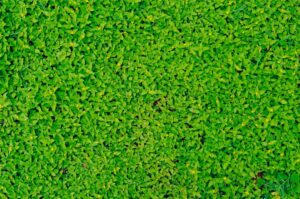Grass allergy rash, often referred to as allergic contact dermatitis, is a skin condition that arises when an individual comes into contact with certain grasses or their pollen. This type of rash is a manifestation of the body’s immune response to allergens found in grass species such as Bermuda, Timothy, and Kentucky bluegrass. When the skin is exposed to these allergens, it can trigger an inflammatory response, leading to various symptoms that can range from mild irritation to severe discomfort.
The underlying mechanism involves the immune system mistakenly identifying harmless substances as threats, resulting in the release of histamines and other chemicals that cause inflammation and irritation.
Individuals with a family history of allergies or those who have other allergic conditions, such as asthma or hay fever, are at a higher risk of developing a grass allergy rash. Understanding the specific grasses that trigger reactions is crucial for effective management and prevention. For instance, certain grasses may be more prevalent in specific geographic areas, making it essential for individuals to identify their triggers based on their environment.
Key Takeaways
- Grass allergy rash is a skin reaction caused by contact with grass pollen or grass itself.
- Symptoms of grass allergy rash include redness, itching, hives, and in severe cases, blistering and oozing.
- Prevention and protection from grass allergy rash can be achieved by avoiding grassy areas, wearing protective clothing, and using barrier creams.
- Treatment options for grass allergy rash include antihistamines, corticosteroid creams, and in severe cases, oral corticosteroids.
- Home remedies for grass allergy rash include cool compresses, oatmeal baths, and aloe vera gel to soothe the skin.
Identifying Symptoms of Grass Allergy Rash
Recognizing the symptoms of grass allergy rash is vital for timely intervention and management. The most common symptoms include redness, itching, swelling, and the formation of blisters or hives on the skin. These symptoms typically appear within hours of exposure to the allergen and can last for several days if not treated appropriately.
In some cases, individuals may also experience systemic symptoms such as sneezing, nasal congestion, or even respiratory issues if they are sensitive to grass pollen in addition to direct skin contact. The severity of the rash can vary significantly from person to person. Some individuals may experience mild irritation that resolves quickly with minimal treatment, while others may develop extensive rashes that require medical attention.
In severe cases, the rash can become infected due to scratching or secondary exposure to irritants. It is essential for individuals experiencing these symptoms to monitor their condition closely and seek appropriate care if the rash worsens or does not improve with home treatment measures.
Prevention and Protection from Grass Allergy Rash

Preventing grass allergy rash involves a combination of avoiding known allergens and implementing protective measures when exposure is unavoidable. One of the most effective strategies is to limit direct contact with grass during peak pollen seasons, which typically occur in late spring and early summer. Individuals who are particularly sensitive may benefit from staying indoors on windy days when pollen counts are high or after rainstorms when grasses release their pollen.
Wearing protective clothing can also significantly reduce the risk of developing a rash. Long sleeves, pants, and gloves can act as barriers between the skin and allergens. Additionally, using barrier creams or lotions that contain ingredients like zinc oxide can provide an extra layer of protection for exposed skin.
For those who engage in outdoor activities such as gardening or sports, it is advisable to shower and change clothes immediately after exposure to grass to remove any lingering pollen or irritants from the skin.
Treatment Options for Grass Allergy Rash
| Treatment Options for Grass Allergy Rash |
|---|
| 1. Antihistamines |
| 2. Topical corticosteroids |
| 3. Oral corticosteroids |
| 4. Immunotherapy (allergy shots) |
| 5. Avoidance of grass exposure |
When a grass allergy rash occurs, various treatment options are available to alleviate symptoms and promote healing. Topical corticosteroids are commonly prescribed to reduce inflammation and itching associated with allergic reactions. These medications work by suppressing the immune response in the affected area, providing relief from discomfort.
Over-the-counter hydrocortisone creams can also be effective for mild cases, offering a convenient option for individuals seeking immediate relief. In more severe cases where topical treatments are insufficient, oral antihistamines may be recommended. These medications help block the action of histamines in the body, reducing itching and swelling associated with allergic reactions.
Antihistamines such as cetirizine or loratadine can be particularly beneficial for individuals who experience systemic symptoms alongside their rash. In cases where secondary infections develop due to scratching or irritation, a healthcare provider may prescribe antibiotics to address the infection while managing the underlying allergic reaction.
Home Remedies for Grass Allergy Rash
In addition to conventional treatments, several home remedies can provide relief from grass allergy rash symptoms. One popular remedy involves using cool compresses on the affected areas. Applying a clean cloth soaked in cool water can help soothe itching and reduce inflammation.
This method is particularly effective when used immediately after exposure to allergens, as it can help calm the skin before more severe symptoms develop. Another effective home remedy is oatmeal baths. Colloidal oatmeal has anti-inflammatory properties that can help alleviate itching and irritation associated with rashes.
Adding finely ground oatmeal to a lukewarm bath allows individuals to soak and soothe their skin without harsh chemicals or fragrances that could exacerbate their condition. Additionally, aloe vera gel is known for its soothing properties and can be applied directly to the rash to promote healing and hydration.
Over-the-Counter Medications for Grass Allergy Rash

Antihistamines: A Quick Fix
For those seeking immediate relief from grass allergy rash symptoms without a prescription, over-the-counter medications offer a viable solution. Antihistamines such as diphenhydramine (Benadryl) are widely available and can effectively reduce itching and swelling associated with allergic reactions. These medications work by blocking histamine receptors in the body, providing quick relief from discomfort.
Topical Treatments: Soothing the Skin
Topical treatments are also accessible without a prescription. Hydrocortisone cream is a common over-the-counter option that helps reduce inflammation and itching when applied directly to the affected area. For individuals who prefer natural alternatives, products containing chamomile or calendula may provide soothing effects without the use of synthetic ingredients.
Safety Precautions: Reading Labels Carefully
It is essential for individuals to read labels carefully and follow dosage instructions to ensure safe and effective use of these medications.
Seeking Professional Help for Grass Allergy Rash
While many cases of grass allergy rash can be managed at home or with over-the-counter treatments, there are instances where professional medical help is necessary. If an individual experiences severe symptoms that do not improve with standard treatments or if they develop signs of infection—such as increased redness, warmth, swelling, or pus—it is crucial to seek medical attention promptly. A healthcare provider can assess the severity of the rash and recommend appropriate interventions.
Additionally, individuals who suspect they have a grass allergy but have not yet been diagnosed may benefit from consulting an allergist. Allergy testing can help identify specific triggers and guide treatment plans tailored to individual needs. In some cases, allergists may recommend immunotherapy as a long-term solution for managing allergies by gradually desensitizing the immune system to specific allergens.
Lifestyle Changes to Manage Grass Allergy Rash
Making lifestyle changes can significantly impact an individual’s ability to manage grass allergy rash effectively. One important adjustment involves monitoring local pollen counts through weather apps or websites dedicated to allergy forecasts. By staying informed about pollen levels, individuals can plan outdoor activities accordingly and minimize exposure during peak times.
Incorporating air purifiers with HEPA filters into living spaces can also help reduce indoor allergens that may exacerbate symptoms. Regular cleaning routines that include vacuuming carpets and upholstery can further decrease allergen accumulation in the home environment. Additionally, maintaining a healthy diet rich in anti-inflammatory foods—such as fruits, vegetables, nuts, and fatty fish—can support overall immune function and potentially reduce allergic responses over time.
By understanding grass allergy rash comprehensively—from its causes and symptoms to prevention strategies and treatment options—individuals can take proactive steps toward managing their condition effectively. With appropriate care and lifestyle adjustments, it is possible to minimize the impact of grass allergies on daily life while enjoying outdoor activities without fear of adverse reactions.
If you are suffering from a grass allergy rash, you may want to explore the article on understanding the four pramanas in Indian philosophy. This article delves into the different ways of gaining knowledge according to Indian philosophy, which can help you understand the root cause of your allergy symptoms. Check out the article here for more insights.
FAQs
What is a grass allergy rash?
A grass allergy rash is a skin reaction that occurs when a person with a grass allergy comes into contact with grass pollen or grass itself. It can cause redness, itching, and sometimes blistering or hives on the skin.
What are the symptoms of a grass allergy rash?
Symptoms of a grass allergy rash can include redness, itching, swelling, and sometimes blistering or hives on the skin. In severe cases, it can also cause difficulty breathing or anaphylaxis.
How is a grass allergy rash treated?
Treatment for a grass allergy rash may include over-the-counter antihistamines to reduce itching and inflammation, corticosteroid creams to reduce redness and swelling, and in severe cases, prescription medications or allergy shots.
How can a grass allergy rash be prevented?
To prevent a grass allergy rash, individuals with grass allergies should try to avoid contact with grass pollen by staying indoors during peak pollen times, wearing long sleeves and pants when outdoors, and using air purifiers or air conditioning to reduce pollen exposure indoors.
When should someone see a doctor for a grass allergy rash?
If a grass allergy rash is severe, does not improve with over-the-counter treatments, or is accompanied by difficulty breathing or other severe symptoms, it is important to seek medical attention promptly.
























+ There are no comments
Add yours